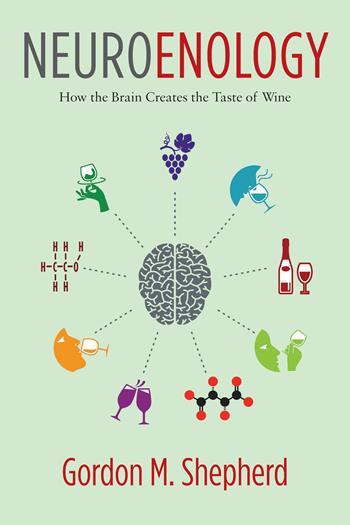The Vocabulary of Wine: Ten Neuroenologic Terms for Understanding the Neuroscience of Wine
“Photoreceptor response: the electrical response when particles in light waves called photons hit the eye. This is what allows us to see a wine as red or white, or, in Shepherd’s view, red or pale.”
This week, our featured book is Neuroenology: How the Brain Creates the Taste of Wine, by Gordon M. Shepherd. Today, we are happy to present a list of ten neuroenologic terms from the book compiled by Columbia UP publicity intern Andrew Loso.
Don’t forget to enter our book giveaway for a chance to win a free copy!
The Vocabulary of Wine: Ten Neuroenologic Terms for Understanding the Neuroscience of Wine
Compiled by Andrew Loso
Gordon M. Shepherd’s new book Neuroenology, the first book on wine tasting by a neuroscientist, offers a comprehensive take on how the senses and the brain perceive wine. The text is palatable for novice wine drinkers and novice scientists alike, and Shepherd introduces the reader to many new wine-related terms. “Neuroenology” itself is a new term which is defined as how the brain creates the taste of wine. These ten are a cross section across the many topics that Shepherd covers.
Aroma burst: the sensation produced by the high concentration of particles called volatiles that coat the mouth immediately after swallowing.
Congruent: describes when the stimuli involved with taste and retronasal smell complement each other, which is essential to maintaining the flavor balance of wine.
Experienced pleasure (EP): the good feeling we get from doing something, relevant here to a study in which subjects felt the same EP for wine ranging from $5 to $90 in a blind test.
Flavor image: one of the most complex, and rewarding, human flavor experiences in which taste, retronasal smell, tactile stimuli, and visual stimuli integrate.
Hedonistic value: the emotional value a person puts on wine, based on their preference for whether or not the wine tastes “good” to them.
Legs: drip lines created by swirling wine in a glass that reflect the wine’s chemical composition.
Mouthfeel: perceptions which physical touch stimuli activate, such as supple, aggressive, viscous, and steely.
Photoreceptor response: the electrical response when particles in light waves called photons hit the eye. This is what allows us to see a wine as red or white, or, in Shepherd’s view, red or pale.
Retronasal smell: the sensation produced after wine has entered the mouth as the mixing of saliva with particles called volatiles in the wine affects their volatility.
Taste modalities: sweet, salt, sour, bitter, umami, and fat, all of which are present in much lower quantities in wine than in food.



